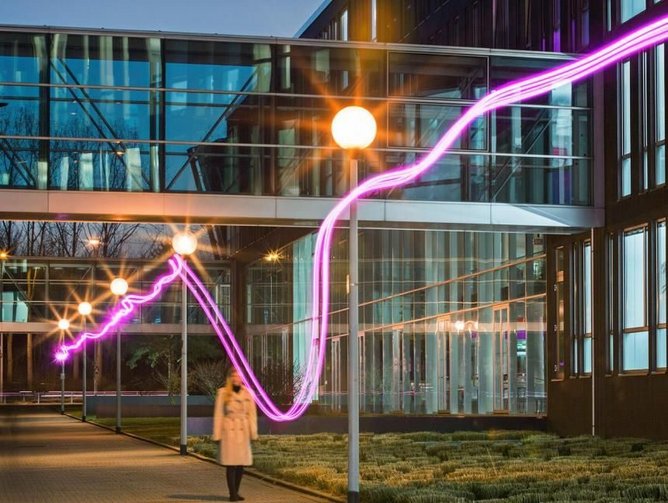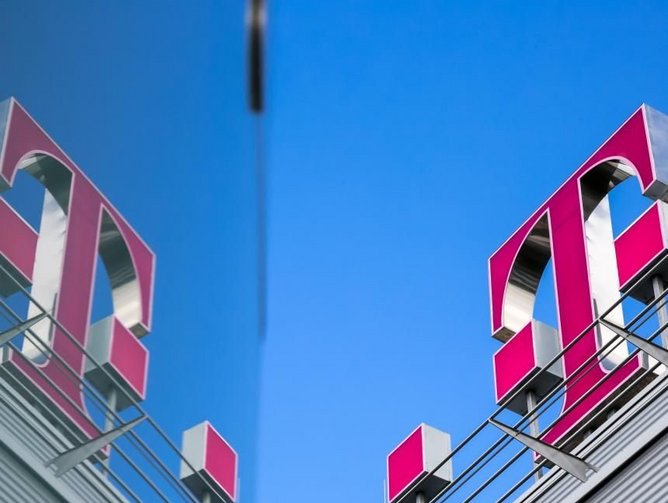How Deutsche Telekom is embarking on its biggest digital transformation yet
Having established itself as one of the world’s leading telecommunication companies, Deutsche Telekom is set to ink a new chapter in its story as it embraces a new wave of digitisation.
No mean task, Dr. Kai-Ulrich Deissner, with his responsibilities as Chief Financial Officer of the newly found Board Area Technology & Innovation under Claudia Nemat, Board member Technology & Innovation, has a meaningful impact on this transformation.
Deissner is what they call in German a “colourful dog”. Not your usual finance officer, he has worked in many parts of the value chain and in three regions across Europe; product marketing, many years of sales and process engineering in the local German business, as well as several CFO roles mark his 14-year long career for Deutsche Telekom.
This diverse background extends to his private life: Deissner is as passionate about his job as he is about gaming (he is a level 40 PokemonGo player) and long-distance running. He was initially trained as a journalist and studied American poetry at Cambridge university, before making his first professional steps in the dot-com bubble of the early 2000s. “And where is the money – this was the leading question when the bubble burst”, he looks back, “and this is what has been guiding my professional behaviour ever since.”
Bringing both operational and financial experience to the fore, Deissner says that today digitisation is critical for the success of the company.
“Digitisation is inevitable. It will happen anyways, so it’s better to take it in your own hands rather than let it happen to you,” Deissner observes. “Any market player out there will tell you that digitisation is mission critical. You need to become faster and quicker and more innovative to remain competitive by enabling accelerated digitisation for better customer experience.”
Deutsche Telekom’s commitment to digitisation is most visibly manifested by the fact that it created a new board area called Technology and Innovation, clearly signalling the self-conception and importance of technological ingenuity for the organisation.
Convergence – the bundling of different network, communication and IT technologies – was one of the major steps into digitisation. Customers want to be able to access their data quickly, anywhere and at any time. This requires convergent networks that speak a single language: IP. Especially Claudia Nemat’s team is driving this convergence of technology, IT and innovation at Deutsche Telekom. This will make the company faster and more efficient. Convergence allows to overcome technical limitations, making new, innovative services possible.
Deissner explains that, as more rapid technological advancements have entered the fray, the borders between network technologies and information technology are quickly receding.
“Historically separate divisions such as network technology (NT) and information technology (IT) are now converging as technology develops. Classical network technology and IT grow stronger together. Software Defined Networks are on the forefront,” he says. “To acknowledge that, we've combined network technology and information technology into one area to strengthen innovation, to make it much quicker and to deliver what we promise.”
Being fully committed to its technology leadership attaining innovation leadership in networks and 5G, Deutsche Telekom recognises that its core asset is its leadership in 5G and lightning-fast network. As the fundamental basis for this, the company is currently undergoing “a network modernisation of historical scale,” Deissner stresses. With his long-distance running experience, Deissner knows that in order to undergo this radical transformation, you need a long breath and endurance.
On top of this, the organisation is driving network expansion in Germany faster than any other company. Recently, just under 300 new mobile base stations went into service in the region. In 2017, the company also installed 40,000 km of optical fibre in Germany alone, more than the entire length of the federal road network in the country.
To prepare for the rollout of 5G, Deissner says that Deutsche Telekom is overhauling its network to keep hold of its top-class position. “We strategically see ourselves as the leading European telecom and, with that in mind, it is vital that we keep our network updated,” says Deissner.
“Changing our network from traditional copper to fibre is a strategic investment for the future. For us it is very clear if you want to be a leading European telecom, your core asset is your network, and that's what you need to modernise and to keep it on top and innovate in the future.”
New technologies certainly accelerate this network expansion. “Traditionally, any new network is rolled out in a detailed way taking many different steps and a long time,” he continues. “It can take months before you actually see something on the street. With new technologies, we can accelerate this process immensely, making us more efficient and decreasing our time to market.”
Digital transformations can rack up huge expenses. At Deutsche Telekom, instead of just looking at the amount that the company is investing, management discussions centre on the impact on the top line and more and more on customer experience.
“Expanding our technology leadership is exactly the right impetus for delivering the technology and network innovations that the digital transformation needs. How well or poorly we deliver these technology and network innovations will also determine our bottom line, and thus the success of our company,” Claudia Nemat, Board member Technology & Innovation, stressed as part of the Capital Markets Day in May 2018.
Whilst this is a concept often adhered to in theory, Deissner is ensuring that it becomes an ingrained everyday practice so that Deutsche Telekom can forward its position in the market.
“Traditionally, the finance department measures input, so we measure and control how much money we invest but put equal attention to the 'output' controlling, so both top line and customer experience KPIs,” explains Deissner. “To establish a unit that is faster, more innovative, and more convergent, we decided that we not only need to focus on how much money we invest, but also on what we get for that. Often a complex task to do...”
“In some cases, we're looking at areas that are not traditionally measured in finance, like customer satisfaction. It's been quite a journey for our finance team because while it’s still doing the practical things of providing clear numbers and proper accounting, it’s also about establishing financial logic to measure our return on investment and productivity.”
Deissner adds that it's been quite a challenge to lead traditional finance people to look more into the business and acting as collaborative business partners focusing on market and customer needs.
As Chief Financial Officer for the Technology & Innovation board area, Deissner is aware that this sense of financial logic isn’t just driving results in the company’s finance department but has impact on further operations within the company.
“By bundling all our activities, it is also helping us use our resources to tackle some of the more challenging number work as well. This means we can spend less time producing reports and more time on interpreting the meaning of numbers, which enables us to support the business by providing a broad end-to-end thinking, combining financial, commercial and operative concerns for our business partners.”
Whilst cost efficiency is a vital aspect of this transformation story, it seems that, at the crux of it, Deutsche Telekom is focused on innovation and market impact.
As a result, digitisation is not just changing the back-end functions, it’s also transforming the customer experience and providing new avenues of revenue.
“You cannot reap all the benefits of digitisation if you are only focusing on costs,” Deissner explains. “We think of technology as necessary not just for enabling efficiencies, but for enabling innovation that provides new products and sources of revenue.
“Let me give you a few examples for efficiencies. One is the way you build fibre: Traditionally you manually plan the roll out of your network in many detailed process steps. It takes a long time, before you actually see something on the street. Now, with new technologies we can accelerate this planning process immensely, which is something that makes us more efficient and will help us being on the market quicker.
“Another one comes from our call centres, where we are using artificial intelligent voice agents to answer customer complaints. In most of our internal processes we're using those technologies to be more efficient while the key driver remains to be successful on the market.”
By all accounts, this has been a mammoth transformation for Deutsche Telekom which has stretched across all departments but none of this would be possible without the right culture to foster ingenuity.
Today’s movers and shakers must be agile and innovative. The right culture is necessary to determine a successful digital transformation. Deutsche Telekom is promoting new ways of thinking to foster this culture.
“We've developed what you could call a ‘truly’ balanced scorecard where we're looking at the financial results, the delivery of new technologies, the operations, and the transformation and we're satisfied with the results so far. However, we need further steps to progress even more,” Deissner explains.
“One of the things that we've seen is that if we want to differentiate in the market, there needs to be a cultural transformation underlying all of this,” notes Deissner. “In previous years, we have seen siloed thinking, whereby people have thought only within the confines of their organisational units rather than thinking about the benefit of the whole company. It leads to more internal progress but less external progress, and so cultural transformation will be key.”
“To make this cultural transformation real at Technology & Innovation, we massively invest in enabling our employees to work in a more agile and cross-functional way where suitable. This includes structural adjustments, trainings and new working methods and tools,” he explains. “In the area of innovation for instance, we start into a pool organisation, the so-called Innovation Hub, where people can work flexibly in projects, less hierarchical. In IT, we started a programme called ‘IT@Motion’, which is a bottom-up program for the reorganisation of our IT division.”
“The motivation behind the restructuring is to give more power to employees and the creators throughout the company. Innovation is not limited to the board; it's not limited to any department. It's a mindset rather than an organisation.”
Innovation runs deep at Deutsche Telekom and with savvy financial thinking to back it up, it seems the German telecom is ready for any hurdle that comes its way.







